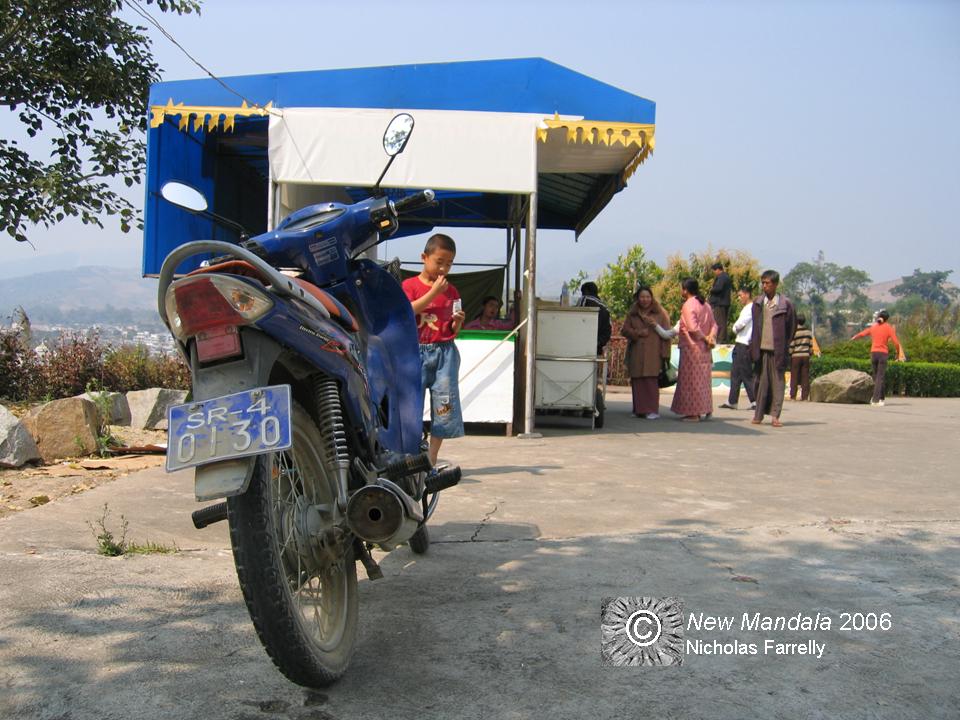Burma’s savviest “ceasefire groups” have, as New Mandala readers will probably know, carved out chunks of Burmese territory that they co-administer alongside the central government. These areas, called “Special Regions”, exist in small border sections of the Shan and Kachin States. Probably the most famous of these regions is Special Region 2 in far northern Shan State – it is controlled by the United Wa State Army.
This photograph was taken a few years back in Special Region 4, in the eastern Shan State. Mong La, the once infamous gambling and prostitution centre (which I understand is now a shadow of its decadent former self) is visible in the distance on the left. Burmese and Chinese tourists are in frame on the right. The motorbike is, like most other vehicles in the area, registered with the local authorities, not with the (central) government.
The snippets of information that seep out about the governance of these semi-independent Special Regions – which have tended, in many ways, to take on a fuedal character – don’t always fully clarify their unusual position in the Burmese polity.
A good study of a Special Region – any Special Region – would be a real contribution to the current literature on Southeast Asian political organisation. As a topic in anthropology, Asian Studies, Development Studies, geography, politics, history or economics there is much to commend it. Ambitious? Sure.
But all the good social science topics tend to be!
 Facebook
Facebook  Twitter
Twitter  Soundcloud
Soundcloud  Youtube
Youtube  Rss
Rss 